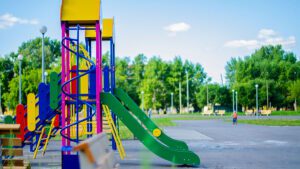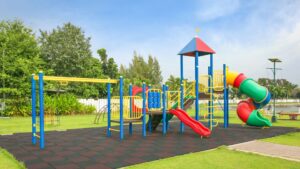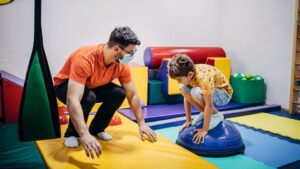Introducción
A la hora de planificar un nuevo parque infantil -o de actualizar uno ya existente- la elección de materiales para parques infantiles es tan importante como el propio diseño. Los materiales adecuados para el equipamiento y el revestimiento de las superficies garantizan la seguridad de los niños, simplifican el mantenimiento y prolongan la vida útil de su zona de juegos. Esta guía explica los opciones de material del equipoCompara sus ventajas y ofrece consejos de mantenimiento para que puedas construir un parque infantil duradero, seguro y divertido.
1. Materiales populares para parques infantiles
1.1 Metal
Pros
- Resistencia y estabilidad excepcionales
- Aspecto moderno; puede adoptar formas complejas
- Larga vida útil si se recubre adecuadamente
Contras
- Puede recalentarse al sol (riesgo de quemaduras)
- El metal sin recubrimiento se corroe o se oxida
- Superficie más dura si los niños se caen contra ella
Buenas prácticas
- Utilice acero con recubrimiento en polvo o galvanizado para resistir la oxidación
- Elegir revestimientos resistentes al calor (por ejemplo, poliamida 12) para elevar el umbral de quemado.
- Instale estructuras de sombra o toldos resistentes a los rayos UV
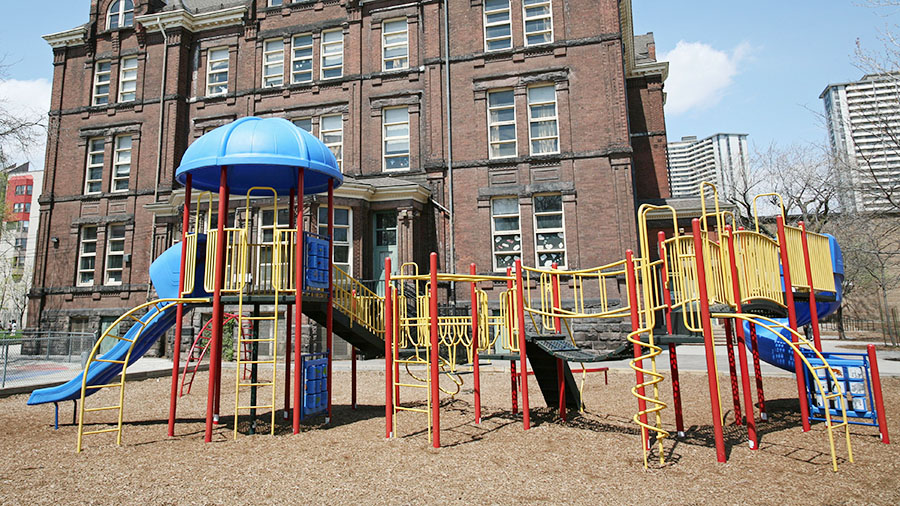
1.2 Plástico
Pros
- Menor riesgo de quemaduras que el metal (umbral de calor ~170°F)
- Amplia gama de colores y formas moldeadas
- Bajo mantenimiento: basta con lavarlo con agua y jabón
Contras
- Menos resistencia estructural que el metal
- La exposición a los rayos UV puede provocar decoloración o fragilidad a lo largo de muchos años
Buenas prácticas
- Utiliza polietileno de alta densidad (HDPE) estabilizado a los rayos UV para una mayor durabilidad
- Inspeccione si hay grietas o agrietamientos durante las comprobaciones rutinarias.
- Sustituya rápidamente los paneles dañados
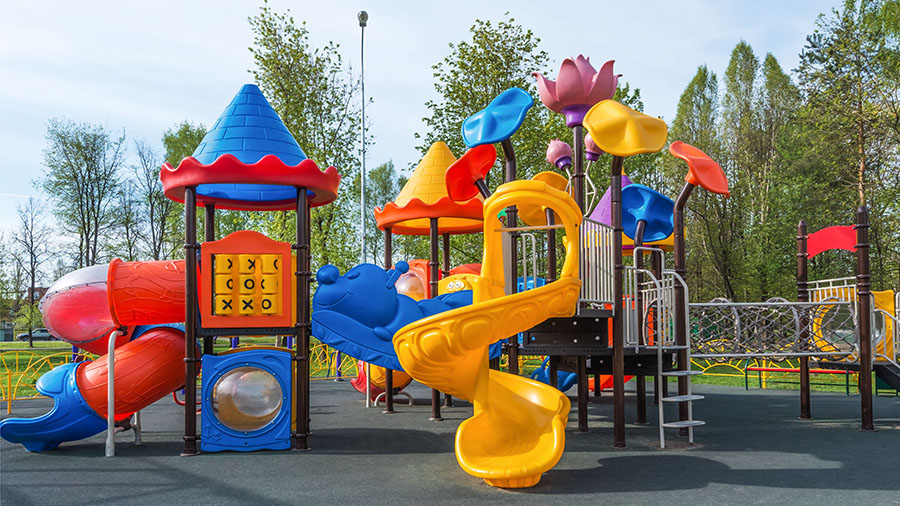
1.3 Madera
Pros
- Aspecto natural y cálido que encaja en exteriores
- Baja temperatura superficial, incluso al sol directo
- Sostenible si se adquiere de forma responsable
Contras
- Propenso a la putrefacción, daños por insectos y astillamiento
- Requiere conservantes y tintes para resistir la humedad
- Los tratamientos antiguos (CCA) son tóxicos; evite la madera anterior a 2003.
Buenas prácticas
- Elija cedro o secuoya para una resistencia natural a la putrefacción
- Aplique conservantes no tóxicos que penetren en el agua
- Inspección periódica de astillas e integridad estructural
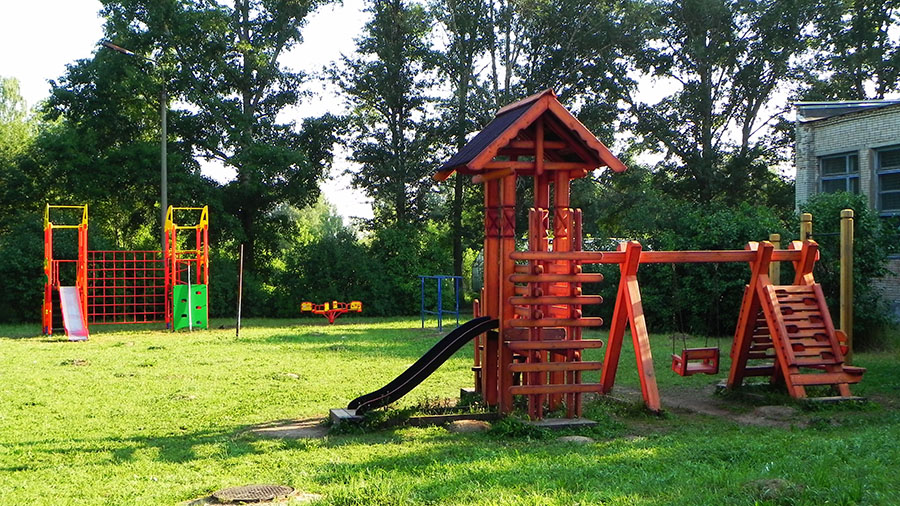
1,4 Caucho
Pros
- Excelente absorción de impactos en superficies de tierra
- Muy antideslizante cuando está mojado
- Fabricado con neumáticos reciclados para mayor sostenibilidad
Contras
- Puede reblandecerse o deformarse con mucho peso o calor extremo
- El mantillo de caucho de relleno suelto requiere comprobaciones periódicas de profundidad
Buenas prácticas
- Utilice caucho vertido in situ o baldosas entrelazadas para el revestimiento unitario
- Mantener una profundidad mínima basada en la altura de caída para el mantillo de caucho de relleno suelto.
- Combínalo con otras texturas (p. ej., rocas de lúpulo de forma libre) para el juego sensorial
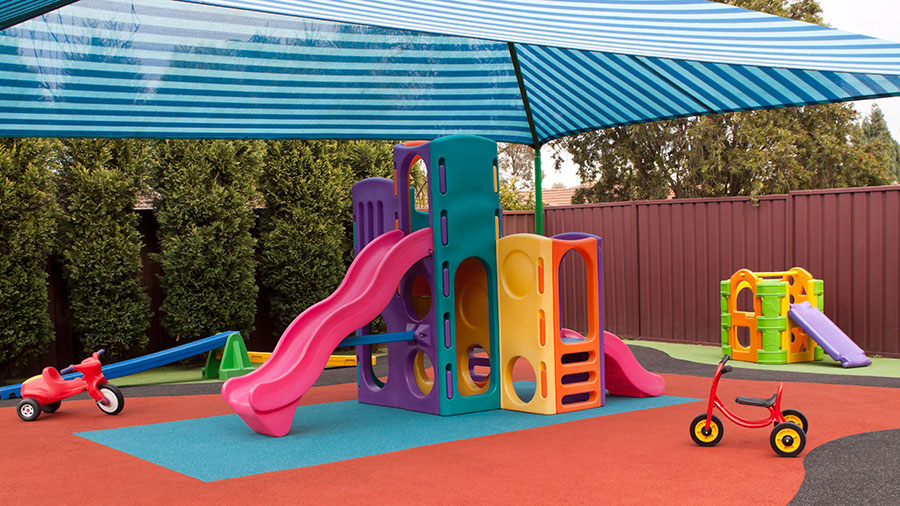
2. Elegir la superficie de juego adecuada
2.1 Superficies unitarias frente a superficies de relleno suelto
| Característica | Unitario (losetas de caucho, caucho vertido) | Relleno suelto (mantillo, FWF, pepitas de caucho) |
|---|---|---|
| Accesibilidad | Totalmente compatible con la ADA, fácil para sillas de ruedas y cochecitos de niños | Menos apto para sillas de ruedas; puede desplazarse con el peso |
| Mantenimiento | Bajo (limpieza anual, parcheado ocasional) | Alta (rastrillar, rellenar para mantener la profundidad) |
| Coste inicial | Alta | Baja |
| Durabilidad | 10-15 años | 5-7 años |
| Absorción de impactos | Consistente | Variable-depende de la profundidad |
Consejo: Para los parques de uso mixto, a menudo funciona mejor una combinación: unitario bajo las zonas de mucho tráfico y relleno suelto en el resto.
2.2 Césped sintético
- Pros: Aspecto de césped natural; excelente drenaje; bajo riesgo de alergias
- Contras: Mayor coste inicial; reposición ocasional del relleno
- Caso práctico: Zonas de juego abiertas, campos deportivos y transiciones entre equipos
2.3 Arena y grava
- Pros: Bajo coste; aspecto natural; buen drenaje
- Contras: Se desplaza fácilmente; puede ser ingerido por niños pequeños; no es apto para sillas de ruedas.
- Caso práctico: Zonas de juego para niños pequeños, zonas de chapoteo
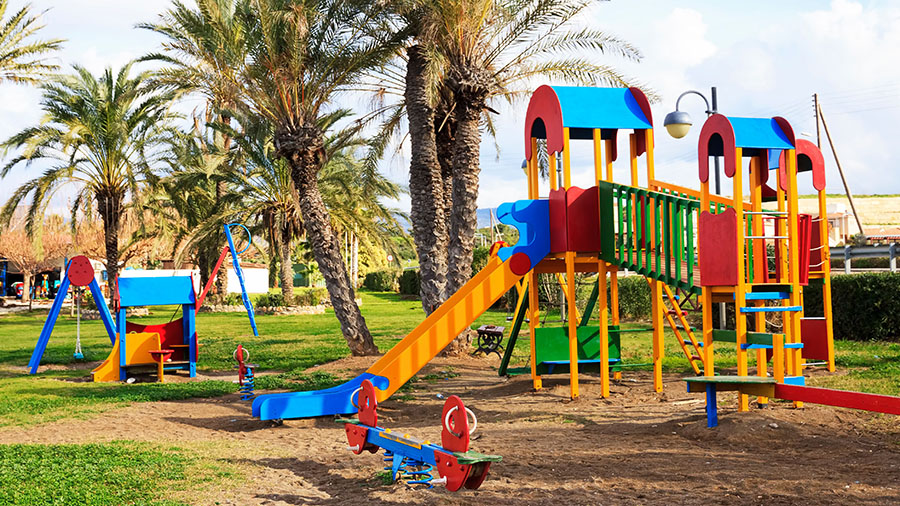
3. Consejos de instalación y mantenimiento
3.1 Planificación previa a la instalación
- Disposición y espaciado: Siga las normas CPSC o EN más recientes sobre separación de equipos y zonas de caída.
- Drenaje: Asegúrese de que haya ligeras pendientes o drenajes subterráneos para evitar que el agua se estanque.
- Preparación del subsuelo: Compactar y nivelar el suelo antes de colocar el revestimiento unitario o el relleno suelto.
3.2 Inspecciones de rutina
- Comprobaciones rápidas semanales: Busque restos, mantillo desplazado o daños evidentes.
- Revisión mensual de hardware: Apriete los tornillos sueltos, sustituya las tapas que falten.
- Auditoría anual de seguridad: Medir la profundidad del relleno suelto, comprobar la degradación del revestimiento, comprobar los revestimientos de metal y madera.
3.3 Reparación y actualización
- Reparaciones menores: Parchear pequeños desgarros de goma, lijar puntos ásperos de la madera, retocar la pintura.
- Revisiones importantes: Sustituir las estructuras corroídas, volver a verter caucho unitario cada 10-12 años, retirar y renovar la madera tratada con CCA.
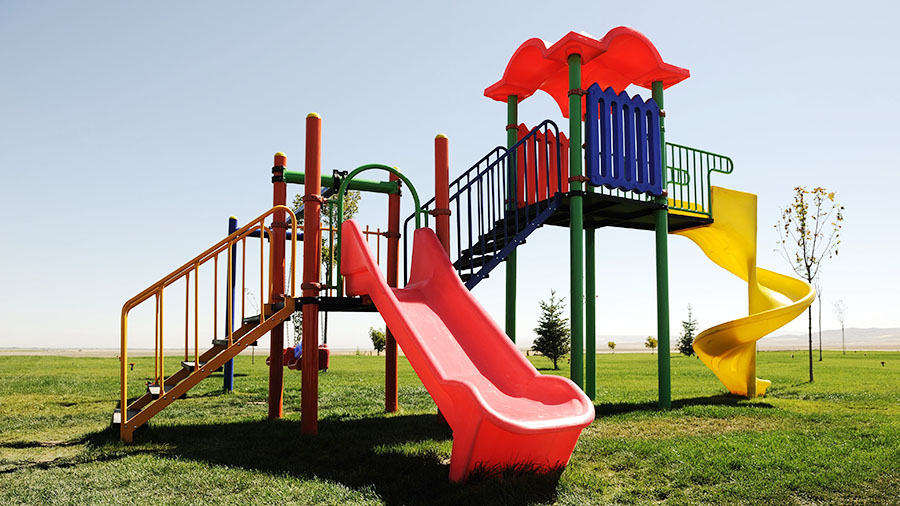
4. Consideraciones sobre el diseño inclusivo
- Vías accesibles: Superficies unitarias lisas desde los aparcamientos o aceras hasta las principales zonas de juego.
- Estaciones de transferencia y rampas: Permitir a los usuarios de sillas de ruedas acceder a plataformas elevadas.
- Elementos sensoriales: Piedras de goma para saltar, instrumentos musicales con mazas de goma, paneles texturizados.
- Sombra y asientos: Bancos a la sombra sobre losetas de goma para cuidadores y niños con necesidades de movilidad.
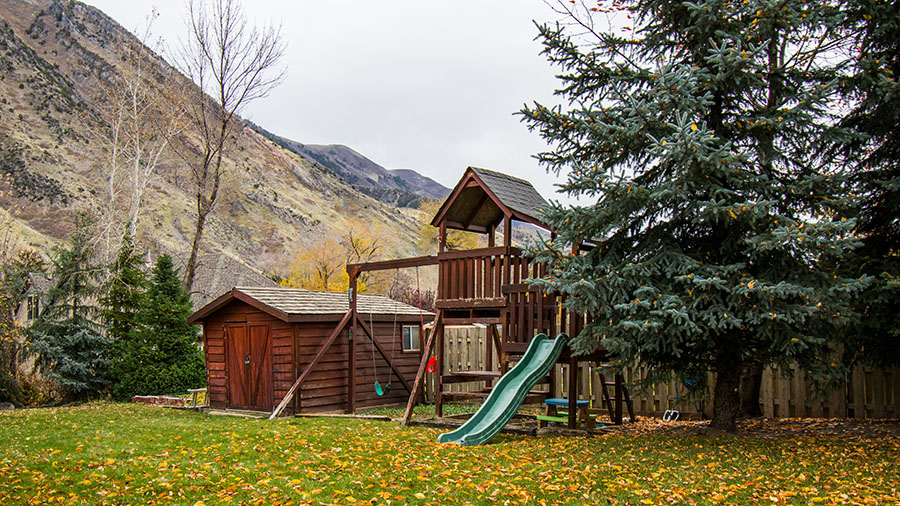
5. Matriz de decisión: ¿Qué material se adapta a su parque infantil?
| Tipo de parque infantil | Mejor material de equipamiento | Mejor material de superficie | Presupuesto típico | Nivel de mantenimiento |
|---|---|---|---|---|
| Patio de la escuela | Acero pintado y HDPE | Caucho vertido | $50/m² | Bajo |
| Parque del barrio | Paneles de cedro y HDPE | Fibra de madera | $80/m² | Medio |
| Guardería | Plástico y metal recubierto | Baldosas de caucho | $60/m² | Bajo |
| Parque infantil | Madera tratada y plástico | Mantillo de caucho o arena | $120/m² | Alta |
| Parque inclusivo | Acero con recubrimiento de polvo | Césped sintético y baldosas | $70/m² | Bajo |
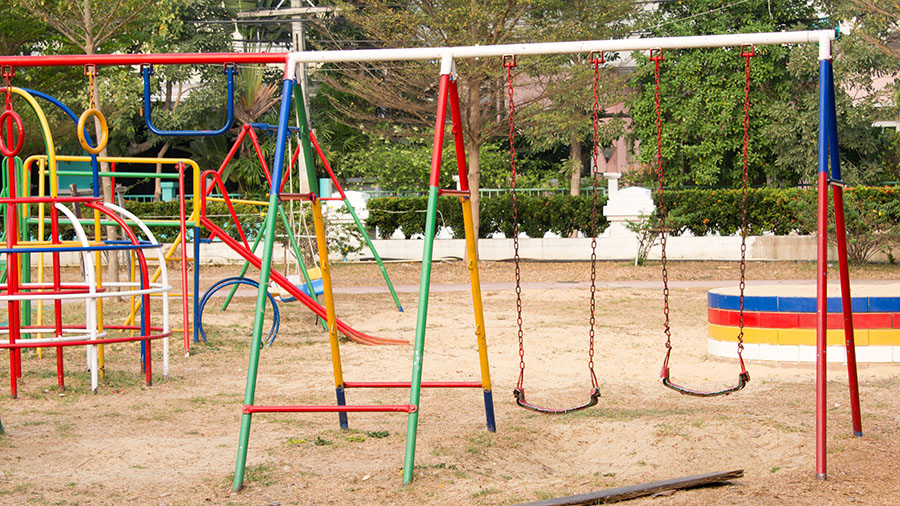
Conclusión
Seleccionar el materiales para parques infantiles y el revestimiento de las superficies son fundamentales para la seguridad, la durabilidad y el disfrute. Tanto si elige metal, plástico, madera o caucho -o una combinación de ambos-, tenga en cuenta el clima local, las necesidades de los usuarios y la capacidad de mantenimiento. Con un diseño bien pensado, inspecciones periódicas y reparaciones específicas, conseguirá un entorno de juego seguro y duradero del que podrán disfrutar niños de todas las capacidades.

